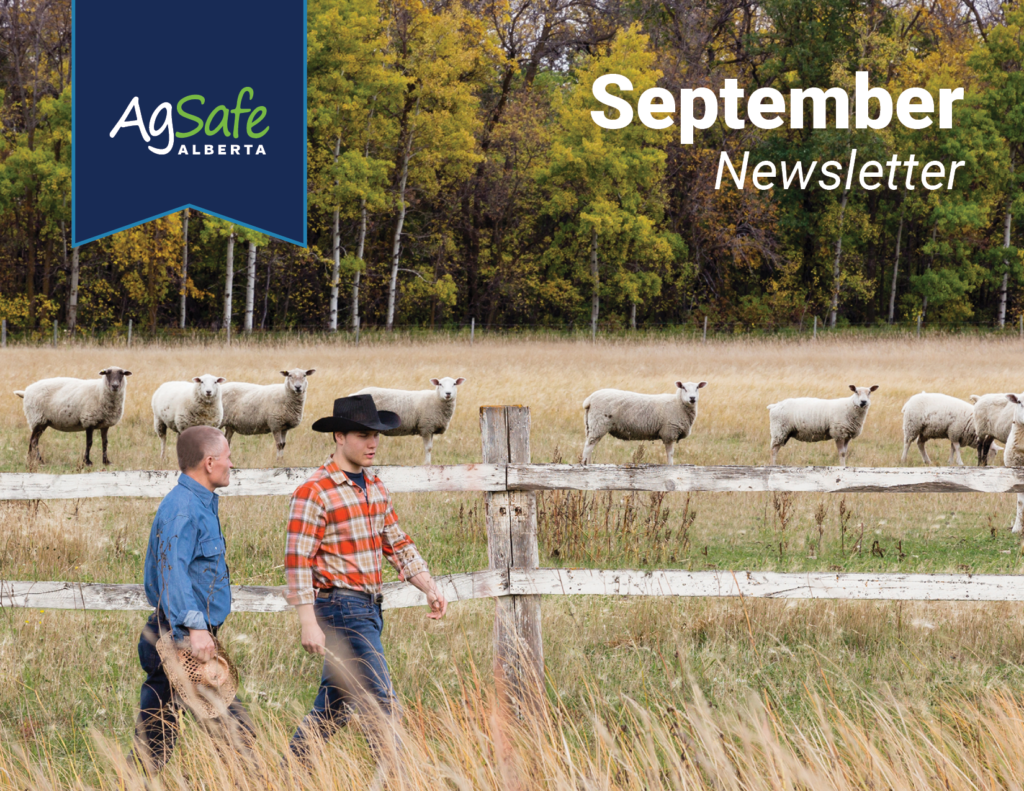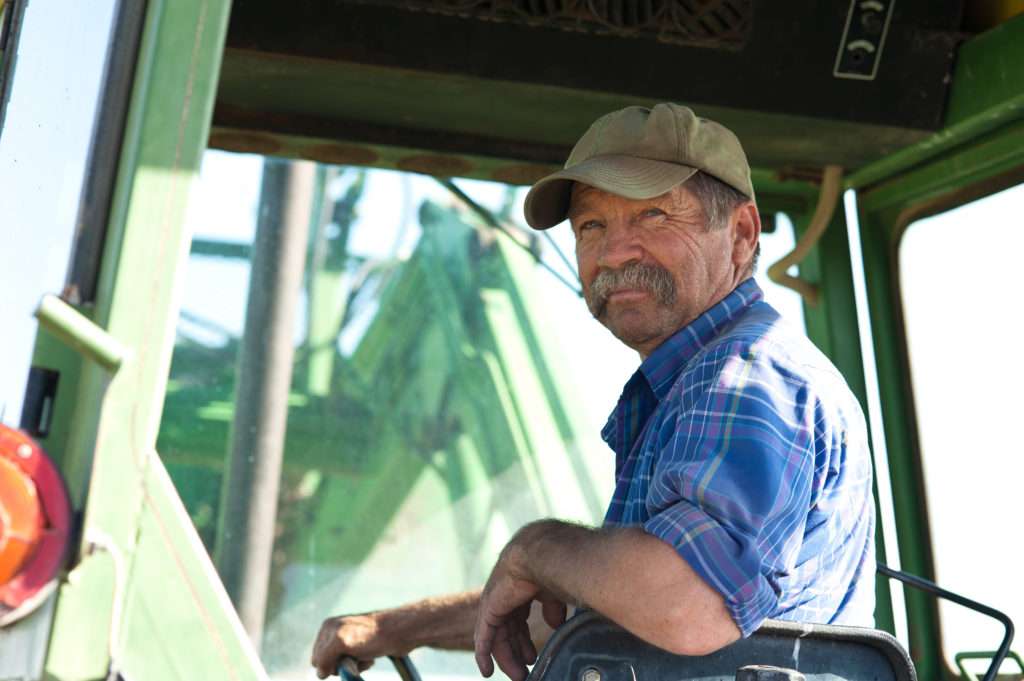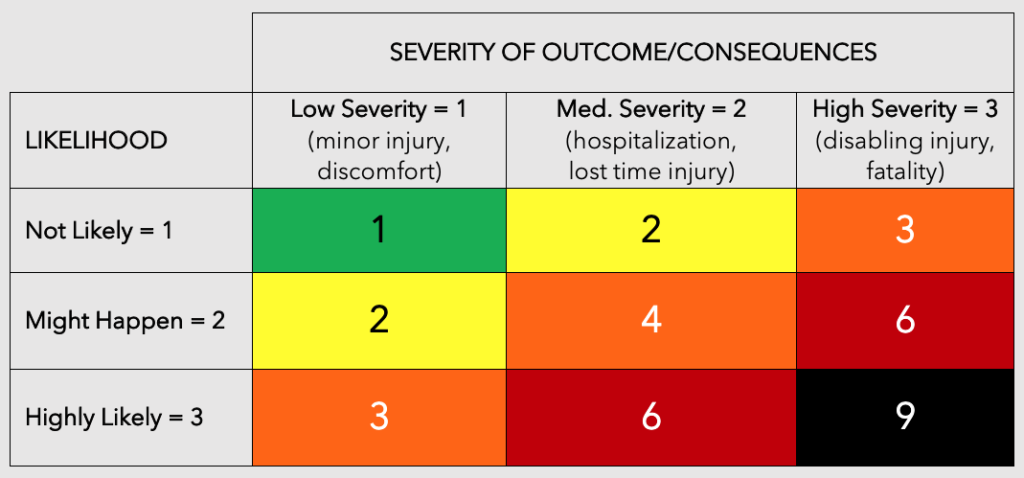
It Happened to One of Us
2021 Incident Summary
(Source: Alberta Occupational Health and Safety)
Description | Injury Type | Age Range | Sector | WCB Code |
Run over by grain truck | Fatality | Not Confirmed | Dairy | 1203 |
Pinned by grain truck | Fatality | 30 to 39 Years | Feed Lots | 1201 |
When a fatality involving a grain truck occurs, there are typically several factors that contributed to it. A few examples of things to keep in mind as you haul crops off the field this harvest include:
Blind Spots
- Blind spots are the areas around the truck that cannot be seen by the operator.
- While the truck’s size and length contribute to blind spots, they can also be made worse by poorly positioned mirrors.
- Trucks have a blind spot in front of them, not just at the sides or back. You might be surprised by just how big the blind area on a Ford 880 grain truck is!
Ground Condition
- Crop stubble is a very real tripping hazard, which makes it even more important to stay away from a moving grain truck.
- This is Alberta, and some of us are just one rainstorm away from having to pull a truck or other piece of equipment out of a soft spot in a field. For more information on how to do this safely, read Perdue Extension’s Extracting Stuck Equipment Safely: How to Avoid Expensive and Painful Incidents.
Fit For Duty Issues
- Being fit for duty means that someone can safely perform a specific job or task under the working conditions. Not being fit for duty increases the risk of a serious mistake being made, and in turn, a serious or fatal injury.
- Fit for duty issues go far beyond impairment from alcohol or illegal drugs. Fit for duty issues can result from illnesses or health conditions, prescription medications, stress, and fatigue as well.
- Pre-job meetings and toolbox talks held before work or after breaks are a great time to engage with the people working on your farm to informally assess if they are fit for duty or if other measures need to be taken to keep them and others safe.
- Learn more about being fit for duty and what you can do by reading Energy Safety Canada’s Fit For Duty: A Program Development Guideline.

Farming and growing older
According to the Alberta Medical Examiners Reports, of all the farm deaths that occurred between 2020 and 2021, 80% were over the age of 50.
Imagine having an older tractor on your farm; it is versatile, easy to repair, doesn’t have payments and you have been using it for nearly 30 years. Due to its age, it doesn’t have a lot of safety features, and your father used to start it from the ground because he found it difficult to climb up and down from the seat. You start that tractor the same way… at first following his example, then it became a habit, and now old injuries and arthritis make it difficult for you to climb up and down out of the seat.
It’s time to get the hay up. Normally, your spouse would help you, but they had a surgery not long ago and can’t help this season. To make matters worse, your newer tractor with all the bells and whistles developed an electrical issue that you can’t seem to fix, so you have been using your old tractor instead. After spending many long, hot hours in the field the day before, you go out early in the morning to start up “old reliable,” but because you were so tired last night, you forgot to take it out of gear and didn’t set the parking brake.
You turn the key. The tractor lurches forward, knocking you to the ground and…
As we get older, unsafe practices combined with age-related factors such as hearing loss, vision loss, slower reaction times, reduced sleep quality, reduced muscle strength, medical conditions and medications can increase our likelihood of a serious injury or fatality while working on the farm. What we may have been able to get away with doing before (by sheer luck or chance), we are less likely to over time.
This does not mean that older farmers need to or should stop farming. What it means is that we need to be even more safety conscious as we age and take all these factors into consideration before doing something. It is as simple as taking a moment to answer these questions:
- How often do you do things that are unsafe/could be done more safely?
- What conditions, medications, illnesses, stressors or other factors could impact your ability to get the work done safely?
- What could go wrong when you do these things?
- How severe would the consequences (outcomes) be if something did go wrong?
- What can I do to make it safer and prevent something from going wrong?
Seniors and Agriculture-Related Fatalities
According to Canadian Agricultural Injury Reporting, between 2006 and 2015, the top five mechanisms of injury leading to the death of seniors on the farm were:

SAFETY FIRST, LAST THOUGHTS
Understanding Risk
Risk is commonly defined as the likelihood of an event occurring and the severity of the outcomes if the event does occur. We know that you spend a lot of time managing risk on the farm, and we encourage you to start considering safety among those risks that you manage.
It makes good business sense, as it will reduce the likelihood of an incident happening and the time, costs and other losses the farm would incur as a result. Too often we fall into the trap of believing that because we have done things a certain way for a long time that it is safe, otherwise we would have lost fingers or died by now, right?
The reality is that sometimes luck is on our side (helped by youth and the ability to move quickly out of harm’s way). It is important to remember that the more often we do something unsafe, the greater the likelihood of something going wrong. You cannot rely on luck to keep you or the other people working on your farm safe.
To help you put risk into perspective, let’s apply the risk formula using the risk matrix below to a very simplified example task.
Risk Definition/Formula:
Risk = Likelihood x Severity
Risk Matrix:



In both cases, the likelihood of a fall would increase if there were high winds, if the ladder was wet or frosty, if the person climbing it had arthritis in their hands, if they were ill, etc. Keep in mind that the severity of a fall under 10 feet can still be disabling or fatal and the chance of a severe outcome would increase if the person fell while working alone as they might not receive help in time.
In these examples, even though the grain bin may only need to be climbed an average of five times a year, over the years the likelihood of a fall occurring increases because you are being exposed the hazard more often (25 exposures verses 150) and it would be a reasonable assumption that someone would lose their grip or footing at some point during those 150 climbs over the 30-year period.
Click here for AgSafe Alberta’s online orientation to Risk Assessment on the Farm.
To complete your own hazard assessment, download AgSafe Alberta’s Formal Hazard Assessment Template.
CONTACT US
For general inquiries: info@agasafeab.ca /403-219-
For our hotline for incidence assistance: 1-833-9AGSAFE

